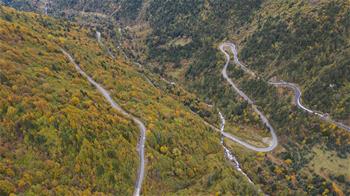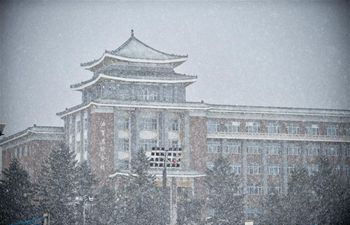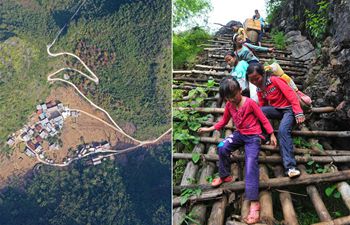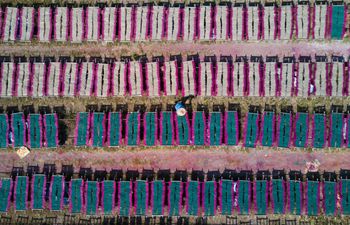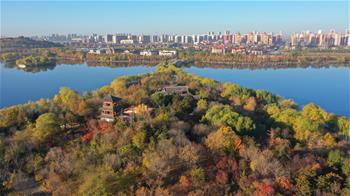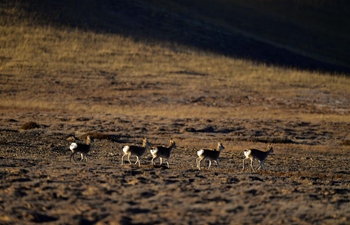NAIROBI, Nov. 14 (Xinhua) -- A majority of Kenyan farmers have turned to short cycle crops to overcome climate change, which has been characterized in the east African nation by unpredictable rains and rise in pests and diseases.
Watermelons, tomatoes, okra, onions, butternuts, canola, traditional vegetables and beans are some of the short-cycle crops that are now popular as Kenyan farmers become climate-smart.
The crops mature in about three months, therefore, better utilize the little rains that have become the norm in Kenya.
East African nation farmers are thus ditching long cycle crops like maize and cane, which stay on the farm from eight to 18 months.
Amos Kitula, a farmer in Athi River on the south of the capital Nairobi, is among those growing the short cycle crops.
He farms majorly tomatoes and as soon as he harvests the crop in four months, he plants beans or traditional vegetables.
"This is the second year that I am planting the short season crops. There is a time in 2017 I harvested tomatoes in August and went for maize to utilize the October-December rain season but the rains were inadequate and the crop failed," he said recently.
Kenya's agriculture is largely rain-fed, one of the reasons farmers have been hit harder by the effects of climate change.
This year, maize farmers were among the biggest losers when the rains delayed to start from March to May.
Most farmers, especially in the breadbaskets regions of the Rift Valley, had already planted their crops, which withered due to lack of rains.
The optimists dug deeper into their pockets and bought fresh seeds and fertilizers and replanted.
The savvy ones in the region have, however, chose to be climate-smart, growing crops that can be harvested faster and fetch higher prices.
"Over the years we have lived with the belief that no any other crop does well in Trans Nzoia and the larger western Kenya apart from maize. For the first time in my life as a farmer, I planted onions," George Ambuche on phone.
He grew the crop in May and started harvesting in August. His farm now hosts traditional vegetables that he planted at the onset of the October rain season.
"I am already harvesting the vegetables because the rains were adequate for the crop. If it was maize, I would harvest next year," he said.
In the drylands, farmers are also going for short cycle crops or those that need very little water, which include green grams and Dolichos beans.
Beatrice Macharia, an agronomist with Growth Point, an agro-consultancy, noted that the short cycle crops not only cushion farmers from climate risks but also fetch higher returns after a short period.
"A crate of tomatoes goes for up to 6,000 shillings (58 U.S. dollars), which is incomparable to a bag of maize that sells at an average of 20 dollars," she said, adding the longer the time crops stay on the farm, the higher the exposure to climate risks.
She added that the short cycle crops are also good for those beginning in farming as most Kenyan young people are doing.
